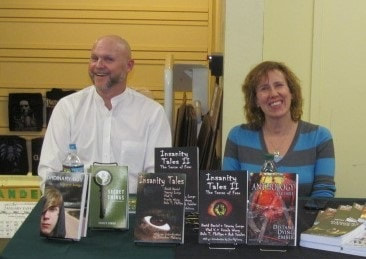Actually, we’ve been working—you know what? I’m just going to let Rob explain it here: http://robsmales.webs.com/apps/blog/show/44732454-our-collaboration-part-1-two-heads-
All caught up now? See, basically, what happened was Rob and I, who work together anyway as the brilliant editors who helm S & L Editing, got it into our heads that we’d collaborate on a novel. After all, we’re a pretty great team when it comes to editing, and it’s not like we haven’t worked together on stories before . . . sort of. We’ve brainstormed ideas together for our own stuff, and critiqued each other’s work, so that counts, right?
Now any writer worth their salt will tell you that before collaborating with anyone, you should consider the following things:
- Compatibility. Are your priorities in alignment? Do your strengths and skills complement each other? Do you communicate well with each other?
- Who is going to write what? Will you alternate chapters, or will one of you write one character’s scenes, the other taking over the supporting cast?
- Writing style. Do your voices mesh well? Does one of you write every morning from 5–7 a.m. without fail, while the other sleeps in and writes when she can throughout the day? Will this make you want to kill each other?
- Legality. If one of you is hit by a chunk of frozen human waste dropped from a passing aircraft, will the other be allowed to carry on the series? Who owns the characters? Is it a 50/50 split?
- Post-writing workload: How will editing, revising, querying, synopsis-writing, and general “What do we do now?” tasks be handled?
Here’s what I considered before diving into this project:
- I have a tendency to not only take on too much work, but to be a bit persnickety about it. I once wrote a thirty-page essay on why the word “some” and its variants (something, someone) should be avoided at all costs. In my writing and editing career, I’ve only met one other person who not only keeps pace with me in terms of workload, but also finds discussions on not superscripting ordinals fascinating: Rob.
- Rob and I have the same sense of humor.
These two things were enough: of course we should collaborate!
We were eager (and yes, nervous) to get started. Rob had ideas—I’m continually jealous of how quickly he can come up with plots and characters, while it takes me three months just to come up with, “There’s a guy. What’s his name? Umm . . . Todd . . . Tom . . . nope, I know a guy named Tom, and he’s got just the ego to think it’s him . . . Sherman, that’s it. Now what does Sherman do?” I like to think my strength is spring-boarding off of an initial idea: give me an open submission call with a theme, and I’m good to go. So after listening to Rob rattle off ideas like a tommy gun unloading, I asked, "Can you put one of those in an outline?"
I like the concept of outlines, you see. I thought it might be helpful if we had one, to keep us on track and guide us if we got stuck. Rob obliged. And here’s where the fun began: while outlines are a sensible, structured way to approach any project, neither one of us really uses them. He wrote it up, I added my notes, and we began. Rob wrote the first chapter and sent it my way. I liked it. He’d made me chuckle. I liked the first main character introduced, and had some direction as to where to go next. I glanced at our outline. And promptly thought, Nah, that’s not gonna happen right now.
Before we’d started this book, a mutual writer friend, upon hearing of our collaboration and having some experience with those types of projects, said, “I hope you two are still friends at the end of the book.”
As I typed away, veering sharply off the outlined path, her words rang in my ears. How upset would Rob be to see where I’d taken the second chapter? Would cramming it full of things I thought might make him laugh help? Would we still be speaking by the end of chapter three?
To be continued . . .

 RSS Feed
RSS Feed